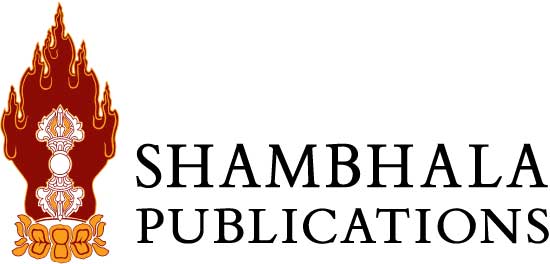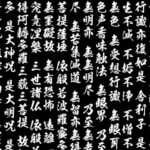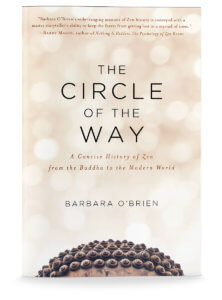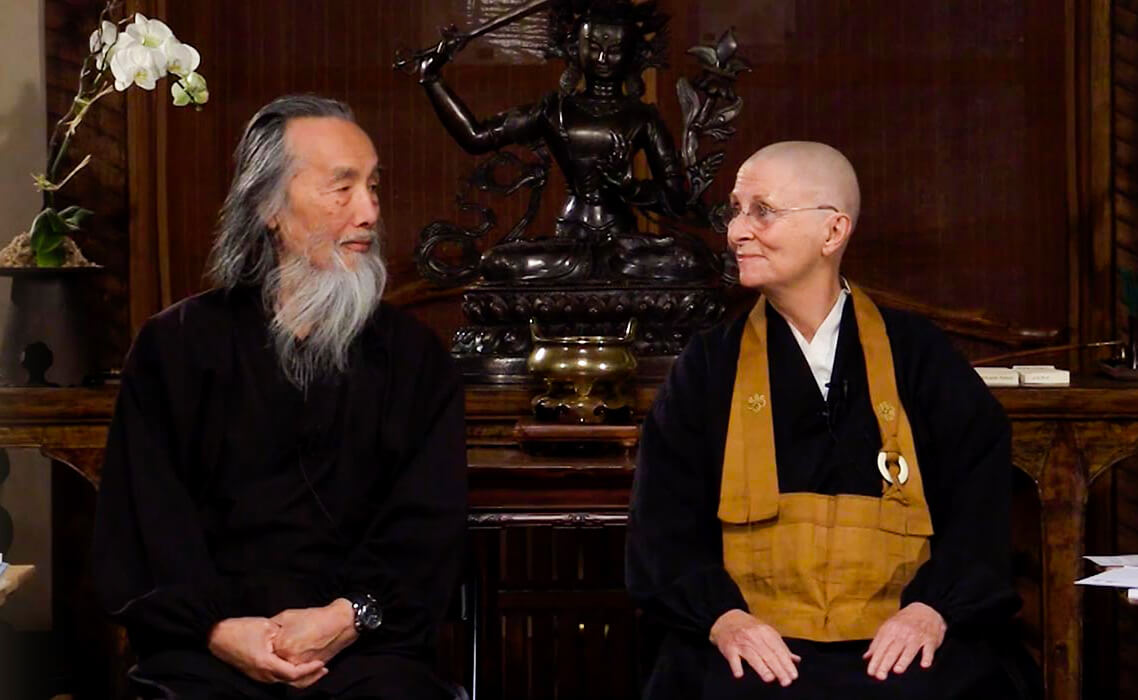

The Heart Sutra stands among the classic Buddhist scriptures. Akin in importance to the “Shema Yisrael” for Jews or the “Lord’s Prayer” for Christians, the Heart Sutra is considered by Mahayanists, and especially Chan and Zen Buddhists, to contain the pith instructions for the practice of their religion—namely the radical negation of conventional concepts and extreme views in favor of an experience of reality permeated by wisdom and compassion.
"Heart Sutra" is a translation of the Sanskrit term Prajñāpāramitāhṛdaya, which more fully translates to “The Heart of the Perfection of Wisdom Sutra.” Along with the Diamond Sutra, it is the most famous representative of the Prajñāpāramitā (Perfection of Wisdom) section of the Mahayana Buddhist canon. The sutra has been translated into English from Sanskrit, Tibetan, Mongolian, and Chinese canonical sources and exists in both a long and a short form—the short version consisting, incredibly, of only fourteen lines of Sanskrit or 260 Chinese characters.
The key to its brevity is the sutra’s single-pointed focus on negation of conventional understanding. Indeed, this iconoclastic text goes so far as to negate the core teachings of the Abhidharma (the orthodox Theravadin collection of texts interpreting the sutras) and of the Buddha himself—the Four Noble Truths, the Five Skandhas (aggregates), the Eighteen Dhātus (senses, sense objects, and fields of sense perception), and the Twelve Links of Dependent Co-Arising. The Heart Sutra holds that those who allow practice to carry them through and beyond even these wisdom concepts will find “wisdom beyond wisdom,” a far shore of awakening where one is not caught by fixed ideas and therefore can escape all suffering.
Although the Heart Sutra is mentioned in more Shambhala Publications books than can be listed here, interested readers can find various translations and in-depth analyses of the sutra in the following Shambhala books.
Explore Zen Buddhism: A Reader's Guide to the Great Works
Overview
Chan in China
- The Works of the Chan and Zen Patriarchs
- The Works of Zen in the Tang Dynasty (618-907)
- The Works of Zen in the Song Dynasty (960 - 1279)
- The Great Koan Collections
Zen in Korea
Zen in Japan
- Early Zen in Japan
- Dogen: A Guide to His Works
- Rinzai Zen
- Hakuin Ekaku: A Reader's Guide
- The Samurai and Zen
- Zen in Japan up to the Meiji Restoration
Additional Resources
>The Heart Sutra: A Reader’s Guide
- Zen in the Modern World (Coming Soon)
- Foundational Sutras and Texts of Zen (Coming Soon)
- Zen and Tea
The Heart Sutra in Zen and Chan Buddhism
"The Heart Sutra resonates with meditation and a meditative way of life in a way that is as extraordinary as it is profound. Without doubt this is why it is often recited at meditation gatherings and at many Buddhist ceremonies. What, then, are the essential teachings of the Heart Sutra? What is its significance for practitioners of meditation today?"
-From The Heart Sutra, by Kazuaki Tanahashi
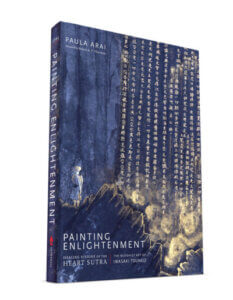
Painting Enlightenment: Healing Visions of the Heart Sutra
By Paula Arai
The Heart Sutra—among the most famous of Buddhist scriptures—has been treated with reverence for centuries. Practitioners and calligraphers have honored the sutra by hand copying it dozens, hundreds, and even thousands of times. Bringing that tradition into the modern era, Japanese artist Iwasaki Tsuneo (1917–2002) created an original and exquisitely intricate body of Buddhist art. The subject of his paintings range from classical Buddhist iconography to majestic views of our universe as revealed by science—all created with painstakingly rendered miniature calligraphy of the Heart Sutra.
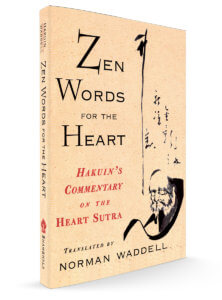
Zen Words for the Heart: Hakuin's Commentary on the Heart Sutra
Translated by Norman Waddell
Hakuin Zenji (1689-1769) was one of the most important of all Japanese Zen masters. His commentary on the Heart Sutra is a Zen classic that reflects his dynamic teaching style, with its balance of scathing wit and poetic illumination of the text. Hakuin's sarcasm, irony, and invective are ultimately guided by a compassion that seeks to dislodge students' false assumptions and free them to realize the profound meaning of the Heart Sutra for themselves. The text is illustrated with Hakuin's own calligraphy and brush drawings.
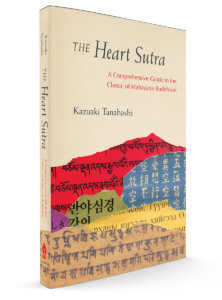
The Heart Sutra: A Comprehensive Guide to the Classic of Mahayana Buddhism
By Kaz Tanahasi
There is no better introduction to the Heart Sutra than this guide by Kaz Tanahashi. A lifelong translator and calligrapher working at the peak of his powers, Tanahashi outlines the history and meaning of the text and analyzes it line by line in its various forms (Sanskrit, Chinese, Japanese, Korean, Tibetan, Mongolian, and several key English translations). The result is a deeper understanding of the history and etymology of the sutra’s elusive words than is generally available to the non-specialist—yet with a clear emphasis on the relevance of the text to practice.
The Heart Sutra: A Comprehensive Online Course to the Classic of Mahayana Buddhism by Kazuaki Tanahashi
For Zen Buddhists—and many others—the sutra expresses the nature of reality in ways both profound and paradoxical. In this online course, Kazuaki Tanahashi and Roshi Joan Halifax collaboratively explore the depths of the sutra’s teaching through talks, chanting, readings, and group discussions.
Using Kaz’s book The Heart Sutra: A Comprehensive Guide to the Classic of Mahayana Buddhism as its text, this course delves deep into the history and lived experience of the Heart Sutra, posing questions and drawing connections to help you integrate this precious teaching into your daily life and awareness, whether you are encountering the sutra for the first time or have chanted it for decades. We invite you to join these two remarkable and wise teachers in exploring the boundless nature of all existence through this core text.
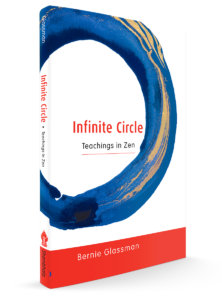
Infinite Circle: Teachings in Zen
Beloved American Zen teacher Bernie Glassman takes the Heart Sutra (along with another key Zen text, The Identity of Relative and Absolute) as his focus in this succinct, down-to-earth volume.
“We see Bernie as one body, but somehow we’re unable to see the whole universe as one body,” he writes. “By seeing our true nature we realize the emptiness of all five conditions and are freed of pain. The last line or mantra of the Heart Sutra is ‘Gone, gone, have gone, altogether have gone!’ Gone where? Here.”
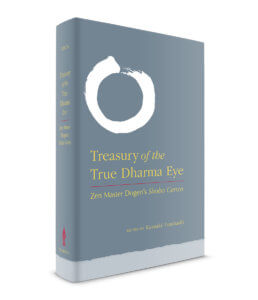
Treasury of the True Dharma Eye: Zen Master Dogen's Shobo Genzo
By Zen Master Dogen
Edited by Kazuaki Tanahashi
While not a full work, the first chapter of Dogen's magnum opus, the Treasury of the True Dharma Eye, is on the Heart Sutra. The essay is entitled Maka Hannya Haramitsu and translated as Manifestation of Great Prajna.
From the introduction of Treasury of the True Eye:
Dogen delivered “Manifestation of Great Prajna” as a dharma talk to the Kannondori community, the first text in the series of Shōbō Genzō. The official title of the original text is “Shōbō Genzō Maka Hannya Haramitsu.” (The following fascicles of Shōbō Genzō are similarly titled.)
This is a commentary on the Prajna Heart Sutra, one of the most commonly recited scriptures in East Asia. The Heart Sutra is regarded as a brief condensation of the entire Mahayana teaching of shunyata (emptiness or boundlessness). Its mantra at the end was often believed to have wish-granting magical power in Esoteric Buddhism.
In this fascicle, Dogen challenges the traditional analytical views of phenomena, asserting that all elements are interrelated. Not mentioning the mantra, he hints at his own aversion for highly ritualized and benefit-oriented Esoteric practices. Dogen placed this text second in his seventy-five-fascicle version of the Treasury of the True Dharma Eye.
Continue to the next article in the series: Zen in the Modern World (Coming Soon)
Return to Zen Buddhism: A Readers Guide to the Great Works
or discover more related to the Heart Sutra in Buddhist thought below

The Heart Sutra and the Prajnaparamita (Perfection of Wisdom) Sutra in Indian and Tibetan Buddhism
"The Buddha is said to have given eighty-four thousand different teachings, the essence of which is contained in the Perfection of Wisdom sutras, of which the Heart Sutra is the most concise version. The Perfection of Wisdom sutras explain the most subtle and fundamental way in which things exist."
-from The Heart Sutra: An Oral Teaching by Geshe Sonam Rinchen, translated by Ruth Sonam
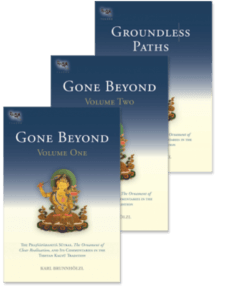
The Prajnaparamita Sutras, The Ornament of Clear Realization, and Their Tibetan Commentaries
Translated by Karl Brunnholzl
The Abhisamayalamkara summarizes all the topics in the vast body of the Prajnaparamita Sutras. Resembling a zip-file, it comes to life only through its Indian and Tibetan commentaries. Together, these texts not only discuss the "hidden meaning" of the Prajnaparamita Sutras—the paths and bhumis of sravakas, pratyekabuddhas, and bodhisattvas—but also serve as contemplative manuals for the explicit topic of these sutras—emptiness—and how it is to be understood on the progressive levels of realization of bodhisattvas. Thus these texts describe what happens in the mind of a bodhisattva who meditates on emptiness, making it a living experience from the beginner's stage up through buddhahood.
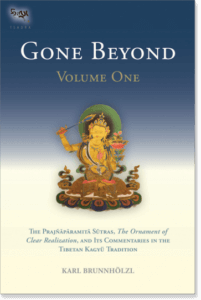
Gone Beyond (Volume 1): The Prajnaparamita Sutras, The Ornament of Clear Realization, and Its Commentaries in the Tibetan Kagyu Tradition
Translated by Karl Brunnholzl
Gone Beyond contains the first in-depth study of the Abhisamayalamkara (the text studied most extensively in higher Tibetan Buddhist education) and its commentaries in the Kagyu School. This study (in two volumes) includes translations of Maitreya's famous text and its commentary by the Fifth Shamarpa Goncho Yenla (the first translation ever of a complete commentary on the Abhisamayalamkara into English), which are supplemented by extensive excerpts from the commentaries by the Third, Seventh, and Eighth Karmapas and others. Thus it closes a long-standing gap in the modern scholarship on the Prajnaparamita Sutras and the literature on paths and bhumis in mahayana Buddhism.
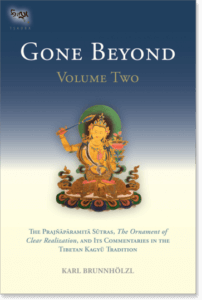
Gone Beyond (Volume 2): The Prajnaparamita Sutras, The Ornament of Clear Realization, and Its Commentaries in the Tibetan Kagyu Tradition
Translated by Karl Brunnholzl
Gone Beyond contains the first in-depth study of the Abhisamayalamkara (the text studied most extensively in higher Tibetan Buddhist education) and its commentaries in the Kagyu School. This study (in two volumes) includes translations of Maitreya's famous text and its commentary by the Fifth Shamarpa Goncho Yenla (the first translation ever of a complete commentary on the Abhisamayalamkara into English), which are supplemented by extensive excerpts from the commentaries by the Third, Seventh, and Eighth Karmapas and others. Thus it closes a long-standing gap in the modern scholarship on the Prajnaparamita Sutras and the literature on paths and bhumis in mahayana Buddhism.
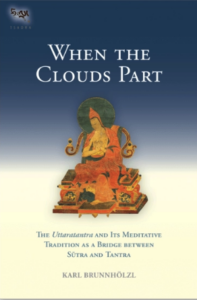
When Clouds Part: The Uttaratantra and Its Meditative Tradition as a Bridge between Sutra and Tantra
Translated by Karl Brunnholzl
“Buddha nature” (tathāgatagarbha) is the innate potential in all living beings to become a fully awakened buddha. This book discusses a wide range of topics connected with the notion of buddha nature as presented in Indo-Tibetan Buddhism and includes an overview of the sūtra sources of the tathāgatagarbha teachings and the different ways of explaining the meaning of this term. It includes new translations of the Maitreya treatise Mahāyānottaratantra (Ratnagotravibhāga), the primary Indian text on the subject, its Indian commentaries, and two (hitherto untranslated) commentaries from the Tibetan Kagyü tradition.
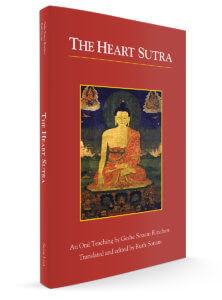
The Heart Sutra: An Oral Teaching
By Geshe Sonam Rinchen
Translated and Edited by Ruth Sonam
This short gem of a book shows how distorted perceptions and disturbing emotions―arising from our misunderstanding of reality―can be completely uprooted, resulting in a freedom from suffering. Understanding the nature of reality is the key to liberation. The wonderfully concise Heart Sutra is considered the essence of the Buddhas' teachings.
The author's long experience in teaching Western students at the Dalai Lama's Library of Tibetan Works and Archives makes The Heart Sutra an ideal introduction for Westerners to this important subject.
Read an Excerpt from the Book
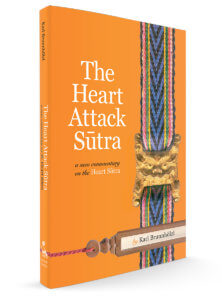
The Heart Attach Sutra: A New Commentary on the Heart Sutra
The radical message of the Heart Sūtra, one of Buddhism's most famous texts, is a sweeping attack on everything we hold most dear: our troubles, the world as we know it, even the teachings of the Buddha himself. Several of the Buddha's followers are said to have suffered heart attacks and died when they first heard its assertion of the basic groundlessness of our existence—hence the title of this book. Overcoming fear, the Buddha teaches, is not to be accomplished by shutting down or building walls around oneself, but instead by opening up to understand the illusory nature of everything we fear—including ourselves. In this book of teachings, Karl Brunnhölzl guides practitioners through this 'crazy' sutra to the wisdom and compassion that lie at its core.
